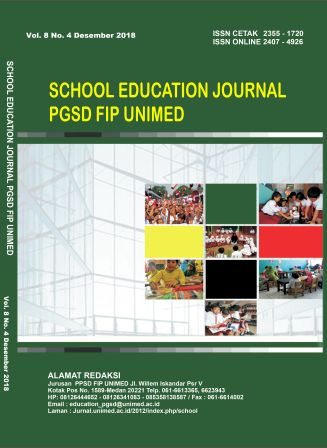PENERAPAN METODE DISKUSI DAN PRESENTASI UNTUK MENINGKATKAN MINAT DAN HASIL BELAJAR SISWA DI KELAS XI IPS-1 SMA NEGERI 1 BAGAN SINEMBAH
DOI:
https://doi.org/10.24114/sejpgsd.v8i4.11375Abstract
The purpose of this study are: 1) To increase learning interest and completeness of learning outcomes by applying the method of discussion and presentation in class XI IPS-1 Bagan Sinembah 1 High School. This research was carried out in the classroom including classroom action activities (PTK) in the form of initial reflection activities and conducting observations to identify problems that occur in the classroom, planning learning, implementing actions, observation and reflection. The PTK research findings are: 1) Student learning outcomes in cycle I of 40 students there were 26 students who completed or around (65%) and 14 students who did not complete or around (35%), with an average of 73.8; 2) Student learning outcomes in cycle II of 40 students there were 36 students who completed or around (90%) and 4 students who did not complete or around (10%), with an average of 79.87. It can be concluded that the application of discussion and presentation learning methods can increase student interest and learning outcomes in Class XI IPS-1 Bagan Sinembah 1 High School District. Rokan Hilir.Keywords: Learning Method, Discussion and Presentoation, Learning OutcomesDownloads
Published
Issue
Section
License
Authors whose manuscripts are approved are approved as follows:
The publication rights for all journal manuscript materials published/published on the SEJ (School Education Journal) E-Journal site are held by the editorial board with the author's knowledge (moral rights remain with the manuscript authors).
The formal legal requirements for accessing this electronic digital journal article are subject to the terms of the Creative Commons Attribution-ShareAlike (CC BY) license, which means that E-Journal SEJ (School Education Journal) has the right to store, transfer media/format, manage in the form of a database, maintain, and publish articles without asking permission from the author as long as the author's name remains as the copyright owner.
Manuscripts published/published electronically are open access for educational, research, and library purposes.

